Newsletter October 2017
 ICRH Global Newsletter ICRH Global Newsletter 5th of October, 2017
|
| PROJECTS |
Expanding work to increase access to adolescent-friendly health services in Tete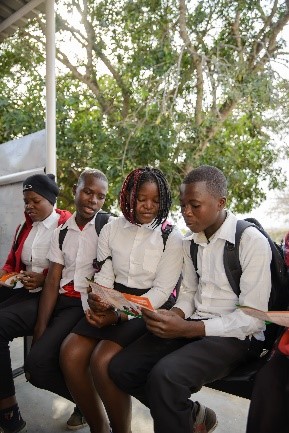 ICRH-Mozambique has just started a project with the Italian NGO CUAMM to increase access to adolescent-friendly health services in Tete province. ICRH-M will build on current activities elsewhere in Mozambique to provide in- and out-of-school adolescents with outreach family planning and HIV services and education, while supporting provision of youth friendly services in health facilities. ICRHM is also responsible for the baseline and endline surveys and qualitative research in the project. ICRH-Mozambique has just started a project with the Italian NGO CUAMM to increase access to adolescent-friendly health services in Tete province. ICRH-M will build on current activities elsewhere in Mozambique to provide in- and out-of-school adolescents with outreach family planning and HIV services and education, while supporting provision of youth friendly services in health facilities. ICRHM is also responsible for the baseline and endline surveys and qualitative research in the project.The project is funded by the Government of Flanders and will run over four years. |
| The 160 girls project in Mombasa Justice clubs in schools to promote children’s awareness on sexual violence ‘160 girls’, a program implemented by ICRH Kenya in partnership with the local NGO Equality Effect, aims to empower girls to stand up against defilement, report defilement and be agents of change in their communities. The name 160 girls is drawn from a 2013 Kenyan high court decision, which made legal history for girls’ rights internationally. In 2010, 157 Girls and 3 boys (thereafter referred to as 160 girls) who were victims of defilement sued the Kenya police of failing to enforce the existing defilement laws and therefore failing to ‘protect’ them from rape. In May 2013, the High Court of Kenya rendered the police indirectly responsible for the harms inflicted by the perpetrators. In 2016, Equality effect, the organization that had supported the 160 girls’ case, partnered with ICRH Kenya, for 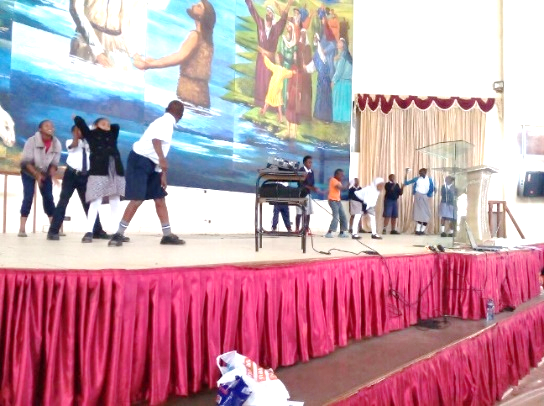 the 160 girls project. The project focused on equipping girls and boys with increased knowledge and voice to bring greater community attention to defilement, provide a stronger check on police and community actions that are harmful to girls, and ultimately serve to make girls safer in their communities. From January 2017, Justice Clubs were set up in three primary schools in Mombasa. Members are boys and girls with an interest in SRH advocacy. They develop items/materials to be used for advocacy and prepare performances and exhibitions for art and poetry, dancing, drama, sports and documentaries. Teachers came together to assist the children. the 160 girls project. The project focused on equipping girls and boys with increased knowledge and voice to bring greater community attention to defilement, provide a stronger check on police and community actions that are harmful to girls, and ultimately serve to make girls safer in their communities. From January 2017, Justice Clubs were set up in three primary schools in Mombasa. Members are boys and girls with an interest in SRH advocacy. They develop items/materials to be used for advocacy and prepare performances and exhibitions for art and poetry, dancing, drama, sports and documentaries. Teachers came together to assist the children.From 2018, ICRHK and Equality effect will work towards improving clinical and psychosocial care for children who are victims of defilement. This will be in addition to the advocacy that is already ongoing. |
| Molecular diagnostic visualization technology An IOF Advanced funding was granted to ICRH researchers for developing a technology for detection of genetic and epigenetic changes associated with cancer and pathogenesis. The technology shows already great potential for current health care in diagnostics of cervical cancer, prostate cancer, melanoma and acute respiratory infections like tuberculosis. The granted funding is to be applied for the maturation of the novel technology, through technical and industrial proof-of-concept to deliver and trade. |
| EVENTS |
Workshop on respectful sexual conduct in higher education: call for abstracts |
Minister-President of Flanders visits ICRH-Mozambique project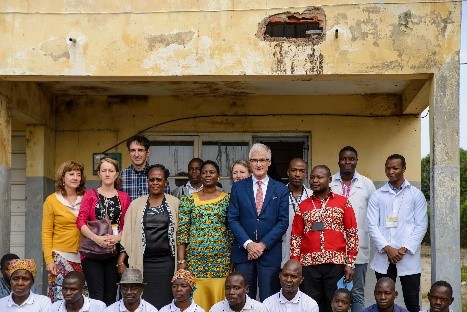 The Flanders Minister-President, Geert Bourgeois, visited Mozambique as part of a 10-day visit to Southern Africa. On the final day of his trip, he spent the morning visiting the work ICRH-M is carrying out near Maputo with funding from Flanders (the IQSCI project). The visit started at the Eduardo Mondlane health facility, where ICRHM has been supporting provision of contraceptive services with a focus on longer-acting methods (LARCs), and has recently opened a youth-friendly health clinic. The delegation then visited a Health Fair at Nhongonhane secondary school, where they visited project activities including youth theatre, mobile services providing contraceptives, condoms, HIV testing and counselling, and a local community radio. The Flanders Minister-President, Geert Bourgeois, visited Mozambique as part of a 10-day visit to Southern Africa. On the final day of his trip, he spent the morning visiting the work ICRH-M is carrying out near Maputo with funding from Flanders (the IQSCI project). The visit started at the Eduardo Mondlane health facility, where ICRHM has been supporting provision of contraceptive services with a focus on longer-acting methods (LARCs), and has recently opened a youth-friendly health clinic. The delegation then visited a Health Fair at Nhongonhane secondary school, where they visited project activities including youth theatre, mobile services providing contraceptives, condoms, HIV testing and counselling, and a local community radio. |
Visit to ICRH-Mozambique by Marleen Temmerman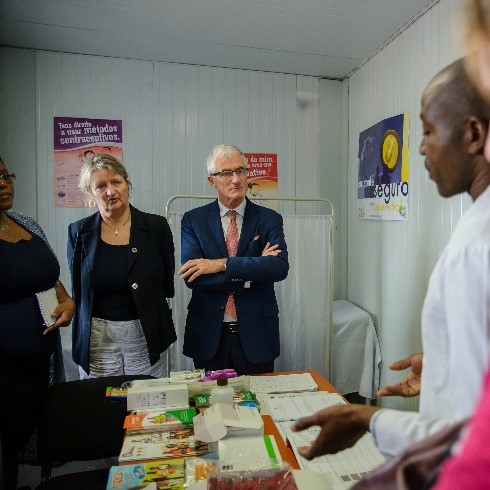 From 24 to 25 August, ICRH-M received a visit by the President of ICRH-Global, Marleen Temmerman, coinciding with the visit of the Flanders Minister-President. From 24 to 25 August, ICRH-M received a visit by the President of ICRH-Global, Marleen Temmerman, coinciding with the visit of the Flanders Minister-President.Marleen visited ICRHM’s family planning project in Manhiça district, and met with staff at the Maputo office to learn more about ICRHM’s other work, its successes and challenges. Marleen and ICRH-M visited the Ministry of Health, where they met with the Minister of Health Dr. Nazira Abdula and witnessed the signing of the new cooperative agreement between the Government of Flanders and the Ministry of Health. Marleen and ICRHM also participated in a round-table discussion on sexual and reproductive health in Mozambique with the Minister-President. |
First lady of Benin visits ICRH Belgium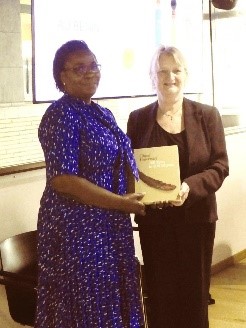 On 26 September, H.E. Claudine Talon, first lady of the Republic of Benin visited ICRH in Gent. On 26 September, H.E. Claudine Talon, first lady of the Republic of Benin visited ICRH in Gent.She presented the work that she is doing through the ‘Fondation Claudine Talon’, aimed at improving the lives of mothers and children. Ms. Talon and ICRH exchanged views on priorities and projects in the field of sexual and reproductive health and rights. The meeting was hosted by prof. Marleen Temmerman, founding director of ICRH. |
Mombasa research group journal club picks up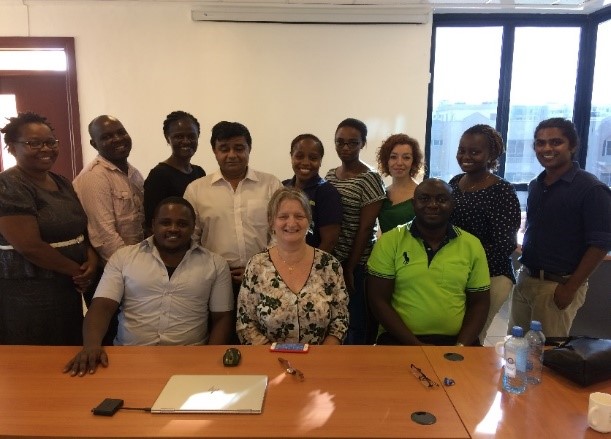 From January 2017, ICRH Kenya, Aga Khan University’s Mombasa Research office, and the University of Washington Global Assistance Program in Mombasa started a monthly journal club. From January 2017, ICRH Kenya, Aga Khan University’s Mombasa Research office, and the University of Washington Global Assistance Program in Mombasa started a monthly journal club.ICRH Kenya takes care of coordination, but the three main organizations host the meeting on a rotational basis. During the formative phase, attendance was limited to research staff from the three main institutions. Currently, Journal club is open to any researcher from Mombasa with an interest in reviewing publications that are relevant to sexual and reproductive health and Global Health. The journal club aims to bring together junior researchers and experts in the field of SRH and to provide a forum for critical review as well as for mentorship and continuous learning. The articles are usually (although not always) publications by researchers in the collaborating organizations. This makes it possible to get clarification on the thoughts and inspiration behind the publication, background information, the process of conducting the study as well as any challenges the researchers may have faced. The organizers hope that attendance will grow and that the journal clubs will build enthusiasm and skills for scientific writing among the research community in Mombasa. |
A delegation of Samara University visits ICRH Belgium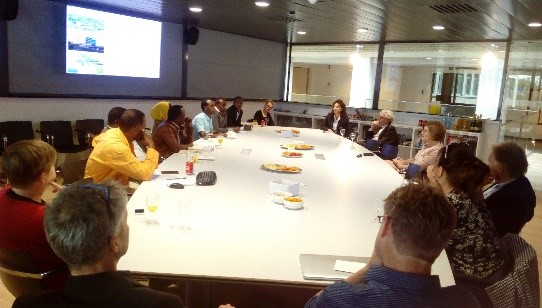 On 22 September, a delegation of the Samara University of Afar Region, Ethiopia, visited ICRH On 22 September, a delegation of the Samara University of Afar Region, Ethiopia, visited ICRHICRH is a partner in the Caring for Mothers “Sayyoh Aysaas” Project, that aims at building the capacity of the midwifery department of Samara University in the Afar Region of Ethiopia. In the context of this project, staff of the midwifery department, together with the Dean of the College of Medical Health Sciences, the Director for International and Public relations, and the Chief Executive Officer of the Afar regional referral Hospital, visited the offices of ICRH, as well as the UZ Gent obstetrics department and the Artevelde Hogeschool midwifery department. At the end of the visit, the delegation was received by the vice-dean and the chair internationalisation of the UGent faculty Medicine and Health Sciences. |
Michael Francis Urban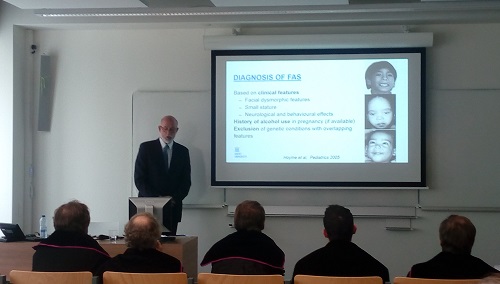 On 20 September, Mike Urban defended his PhD thesis at Ghent University. On 20 September, Mike Urban defended his PhD thesis at Ghent University.Mike Urban qualified as a pediatrician and clinical geneticist at the University of Witwatersrand in Johannesburg, and is now head of the Clinical Unit of Medical Genetics and Genetic Counselling at Tygerberg Hospital and the Faculty of Medicine and Health Sciences, University of Stellenbosch. The title of the thesis is ‘Fetal alcohol syndrome in South Africa: prevalence, risk factors and prevention’. Supervisors were prof. Marleen Temmerman and prof. Matthew Chersich. The full text of the thesis can be downloaded from the ICRH Belgium website. |
PUBLICATIONS |
| Genital herpes A high resolution melting (HRM) technology-based assay for cost-efficient clinical detection and genotyping of herpes simplex virus (HSV)-1 and HSV-2. Genital herpes can be caused by two very similar viruses, herpes simplex virus (HSV)-1 or HSV-2. These two HSV types cannot be distinguished clinically, but genotyping is recommended in the first-episodes of genital herpes to guide counselling and management. Quantitative polymerase chain reaction (qPCR) is the preferred diagnostic method for HSV typing. However, commercial qPCR methods use expensive fluorescent labeled probes for detection. Furthermore, most low-cost methods are not able to differentiate between HSV-1 and -2. The aim of this study was to develop a high resolution melting (HRM) technology-based assay for sensitive HSV-1 and HSV-2 detection and genotyping. Using a panel of 46 clinical specimens, the performance of the HRM assay was compared to two commercial HSV tests: the HRM assay detected HSV in all 23 positive samples, with no false positive results (100% concordance with HSV I/II Real-TM assay). Additionally, the HRM assay correctly genotyped both HSV types in a subset of these clinical samples, as determined by the Realstar HSV PCR Kit. The HSV HRM assay provides a cost-effective alternative method to conventional more expensive assays and can be used in routine clinical specimens, in cases where it is particularly necessary to detect and distinguish HSV-1 from -2. Lieveld, M., Carregosa, A., Benoy, I., Redzic, N., Berth, M., Broeck, D.Vanden, A high resolution melting (HRM) technology-based assay for cost-efficient clinical detection and genotyping of herpes simplex virus (HSV)-1 and HSV-2 .Journal of Virological Methods. http://dx.doi.org/10.1016/j.jviromet.2017.07.005 |
| Female genital cutting in Egypt Drivers and potential responses Female genitalcutting (FGC) is a major issue at the interplay of faith and health in development. The practice is in part faith-inspired, and has clear negative health impacts. The prevalence of FGC remains especially high in Egypt. This article reflects on some of the factors that lead to the perpetuation of the practice by analysing data from the 2014 Survey of Young People in Egypt. The focus is on whether religiosity, acceptance of traditional gender roles and discrimination, attitudes towards women’s autonomy, and age at marriage affect attitudes towards FGC, controlling for other factors. The results suggest that all these factors do indeed play a role. Quentin Wodon, Ali Yedan and Els Leye. Female genital cutting in Egypt: drivers and potential responses. Development in Practice, 2017, Vol. 27, No 5, 708 – 718. https://doi.org/10.1080/09614524.2017.1330401 |
| Gender norms An analysis of gender norms in early adolescent friendships in Egypt and Belgium. A gender analysis was conducted to illuminate the key elements of friendships highlighted by early adolescent girls and boys for the purpose of better understanding the impact of gender norms on adolescent friendships in different contexts. Narrative interviews with early adolescents were conducted in two sites: Assiut, Egypt (n = 37) and Ghent, Belgium (n = 30). The interviews were recorded, transcribed, translated into English, and coded using Atlas.ti for analysis. In both Assiut and Ghent, early adolescents reported some similarities in defining key characteristics of their same-sex friends as well as in the activities they share. However, differences were noticed among boys and girls within each site. In addition, the scope of shared activity was broader in Ghent than in Assiut. In both sites, few opposite-sex friendships were reported. Gender norms influenced choice of friends as well as the type and place of shared activities. Building on knowledge that adolescent friendships guide and reinforce attitudes, beliefs, and behaviors that impact immediate and long-term health, the findings indicate that gender norms inform early adolescent friendships, which may impact healthy development. Al-Attar G, De Meyer S, El-Gibaly O, Michielsen K, Animosa LH, Mmari K. ‘A boy would be friends with boys…and a girl..with girls’: Gender norms in early adolescent friendships in Egypt and Belgium. Journal of Adolescent Health 61 (2017) pp. 30-34. doi: https://doi.org/10.1016/j.jadohealth.2017.03.013 |
| Challenging gender norms A cross-cultural comparison of young adolescents who challenge gender norms. Little is known about how gender norms regulate adolescents' lives across different cultural settings. This study aims to illustrate what is considered as violating gender norms for boys and girls in four urban poor sites as well as the consequences that follow the challenging of gender norms. Data were collected as part of the Global Early Adolescent Study, a 15-country collaboration to explore gender norms and health in early adolescence. The current study analyzed narrative and in-depth interviews conducted in urban poor sites in two middle-income (Shanghai, China; and New Delhi, India) and two high-income countries (Baltimore, U.S.; and Ghent, Belgium). A total of 238 participants, 59 boys and 70 girls aged 11–13 years old and 109 of their parents/guardians (28 male adults and 81 female adults), were interviewed. A thematic analysis was conducted across sites using Atlas.Ti 7.5 software. Findings revealed that although most perceptions and expressions about gender were regulated by stereotypical norms, there was a growing acceptability for girls to wear boyish clothes and engage in stereotypical masculine activities such as playing soccer/football. However, there was no comparable acceptance of boys engaging in traditional feminine behaviors. Across all sites, challenging gender norms was often found to lead to verbal, physical, and/or psychological retribution. The authors conclude that while it is sometimes acceptable for young adolescents to cross gender boundaries, once it becomes clear that a behavior is socially defined as typical for the other sex, the adolescent will face more resistance. Researchers, programmers, and clinicians working in the field of adolescent health need not only attend to those who are facing the consequences of challenging prevailing gender norms, but also to address the environment that fosters exclusion and underscores differences. Yu C, Zuo X, Blum RW, Tolman DL, Kågesten A, Mmari K, De Meyer S, Michielsen K, Basu S, Acharya R, Lian Q, Lou C. Marching to a Different Drummer: A Cross-Cultural Comparison of Young Adolescents Who Challenge Gender Norms. Journal of Adolescent Health 61 (2017) pp. 48-54. doi: https://doi.org/10.1016/j.jadohealth.2017.07.005 |
| Exploration of gender norms and socialization among early adolescents The use of qualitative methods for the Global Early Adolescent Study. The Global Early Adolescent Study (GEAS) was launched in 2014 with the primary goal of understanding the factors in early adolescence that predispose young people to subsequent sexual risks, and conversely, those that promote healthy sexuality across different cultural contexts. The present article describes the methodology that was used for the first phase of GEAS, which consisted of conducting qualitative research to understand the gendered transitions into adolescence and the role that gender norms play within the key relationships of adolescents. Researchers from each of the sites that had completed data collection were also elicited for their feedback on the key strengths, challenges, and lessons learned from conducting research among 11- to 14-year-old adolescents. The purpose of this article is to present the description of each of the methods that were used in GEAS, as well as the researchers' perspectives of using the methods among early adolescents in their sites. The GEAS is being implemented through a collaboration of university and nongovernmental institutions from 15 cities: Assiut (Egypt) Baltimore (U.S.), Blantyre (Malawi), Cape Town (South Africa), Cochabomba (Bolivia), Cuenca (Ecuador), Edinburgh (Scotland), Ghent (Belgium), Hanoi (Vietnam), Ile-Ife (Nigeria), Kinshasa (DRC), Nairobi (Kenya), New Delhi (India), Ouagadougou (Burkina Faso), and Shanghai (China). Approximately 30 in-depth interviews among adolescents and 30 in-depth interviews with their parent/guardian were conducted at each site, with adults and adolescents interviewed separately. To build trust and increase engagement among the adolescent participants, we used two different visual research methods: (1) timeline exercise which was small group based and (2) the Venn diagram exercise which was conducted individually and used at the start of the in-depth interview. The visual aspects of both the timeline and the Venn diagrams not only helped to produce data for the purposes of the study, but also were a successful way of engaging the adolescent participants across sites. While the narrative interviews produced extremely rich data, researchers did notice that there were a few challenges among the younger adolescents. Challenges were related to the length of the interview, comprehension of questions, as some of the questions were either too abstract or asked adolescents about an experience they had not yet had and therefore could not address or articulate. The authors conclude that conducting the first phase of GEAS revealed important insights for research with participants who are in this developmental phase of early adolescence. Methods that involve greater engagement and those that are visual were shown to work well irrespective of the cultural setting. Mmari K, Blum RW, Atnafou R, Chilet E, De Meyer S, El-Gibaly O, Basu S, Bello B, Maina B, Zuo X. Exploration of Gender Norms and Socialization Among Early Adolescents: The Use of Qualitative Methods for the Global Early Adolescent Study. Journal of Adolescent Health 61 (2017) pp. 12-18. doi: https://doi.org/10.1016/j.jadohealth.2017.07.006 |
| Gender norms in early adolescent romantic relationships Exploring how gender norms emerge in romantic relationships among early adolescents (EAs) living in five poor urban areas. Data were collected as part of the Global Early Adolescent Study. The current research analyzed data from interviews with 30 EAs (aged 11–13 years) living in five poor urban sites: Baltimore, Cuenca, Edinburgh, Ghent, and Nairobi. All interviews were recorded, transcribed, and analyzed in English using Atlas.ti, focusing on how EAs experience and perceive gender norms in romantic relationships. Across the five sites, only a few respondents described having been in love, the majority of whom were boys. Findings indicate that stereotypical gender norms about romantic relationships prevail across these cultural settings, depicting boys as romantically/sexually active and dominant, and girls as innocent with less (romantic) agency. In spite of the similarities, Nairobi was unique in that respondents referred to how sexual behavior and violence can occur within EA relationships. In all countries, heterosexuality was perceived to be the norm. Nevertheless, there were examples of EAs accepting homosexuality and expressing supportive attitudes toward equality between the sexes. The authors conclude that while EAs across five different cultural settings seem to endorse stereotypical gender norms in romantic relationships, a few stories also illustrate more gender-equal attitudes. As stereotypical gender norms have a demonstrated negative effect on adolescent sexual and reproductive health and well-being, additional research is needed to understand which factors—at the interpersonal and structural level—contribute to the construction of these norms among EAs. De Meyer S, Kågesten A, Mmari K, McEachran J, Chilet-Rosell E, Kabiru CW, Jerves EM, Currie C, Michielsen K (2017). “Boys should have the courage to ask a girl out": Gender norms in early adolescent romantic relationships. Journal of Adolescent Health 61 (2017) pp. 42-47. doi: 10.1016/j.jadohealth.2017.03.007 |
| Adolescent mothers: too young to be neglected Despite the strong global call by the UN for sexual and reproductive health care for adolescents and young people there is still a large unmet need. About 16 million girls aged 15–19 years and some 1 million girls under the age of 15 years give birth every year—most in low-income and middle-income countries. Every year, about 3 million girls aged 15 to 19 years have unsafe abortions, resulting in an estimated 2500 adolescent deaths. Because of sociocultural and religious factors, poverty, and inequity, little progress has been made to prevent adolescent girls from becoming mothers when they should be at school and developing their full potential. Additionally, young pregnant girls are a high-risk group and need more, earlier, and better targeted antenatal and delivery care. Recently, WHO provided guidelines on antenatal care that cover antenatal care for normal pregnancies and have adopted a woman-centred, holistic approach to care. Perhaps the most striking of the 2016 antenatal care guidelines is the recommendation of a minimum of eight routine antenatal visits for both primigravid and parous women. The guideline has been both welcomed and criticised: although aspirational for optimal clinical care, the feasibility and relative cost-effectiveness, especially against other health interventions, has not been addressed. Perhaps the increased number of visits has to be prioritised and field-tested for young women, because they are the most vulnerable group of pregnant women. In conclusion, governments must ensure that the reproductive health and rights of all women and girls are respected, which includes education, information, access to contraceptives and reproductive health services, and optimal pregnancy care for all women and girls tailored to the needs of young adolescent mothers. Marleen Temmerman. Adolescent mothers: too young to be neglected. The Lancet. Published online August 11, 2017 Full text: http://www.thelancet.com/journals/lanchi/article/PIIS2352-4642(17)30061-5/fulltext |
| Early initiation of ART Study protocol for a stepped-wedge randomized trial on impact of early initiation versus national standard of care of antiretroviral therapy in Swaziland’s public sector health system. There is robust clinical evidence to support offering early access to antiretroviral treatment (ART) to all HIV-positive individuals, irrespective of disease stage, to both improve patient health outcomes and reduce HIV incidence. However, as the global treatment guidelines shift to meet this evidence, it is still largely unknown if early access to ART for all (also referred to as ‘treatment as prevention’ or ‘universal test and treat’) is a feasible intervention in the resource-limited countries where this approach could have the biggest impact on the course of the HIV epidemics. The MaxART Early Access to ART for All (EAAA) implementation study was designed to determine the feasibility, acceptability, clinical outcomes, affordability, and scalability of offering early antiretroviral treatment to all HIV-positive individuals in Swaziland's public sector health system. This is a three-year stepped-wedge randomized design with open enrollment for all adults aged 18 years and older across 14 government-managed health facilities in Swaziland's Hhohho Region. Primary endpoints are retention and viral suppression. Secondary endpoints include ART initiation, adherence, drug resistance, tuberculosis, HIV disease progression, patient satisfaction, and cost per patient per year. Sites are grouped to transition two at a time from the control (standard of care) to intervention (EAAA) stage at each four-month step. This design will result in approximately one half of the total observation time to accrue in the intervention arm and the other half in the control arm. Our estimated enrolment number, which is supported by conservative power calculations, is 4501 patients over the course of the 36-month study period. A multidisciplinary, mixed-methods approach will be adopted to supplement the randomized controlled trial and meet the study aims. Additional study components include implementation science, social science, economic evaluation, and predictive HIV incidence modeling. A stepped-wedge randomized design is a causally strong and robust approach to determine if providing antiretroviral treatment for all HIV-positive individuals is a feasible intervention in a resource-limited, public sector health system. We expect our study results to contribute to health policy decisions related to the HIV response in Swaziland and other countries in sub-Saharan Africa. Fiona J. Walsh, Till Bärnighausen, Wim Delva, Yvette Fleming, Gavin Khumalo, Charlotte L. Lejeune, Sikhathele Mazibuko, Charmaine Khudzie Mlambo, Ria Reis, Donna Spiegelman, Mandisa Zwane and Velephi Okello. Impact of early initiation versus national standard of care of antiretroviral therapy in Swaziland’s public sector health system: study protocol for a stepped-wedge randomized trial. Trials. 2017 Aug 18;18(1):383. doi: 10.1186/s13063-017-2128-8. |
| Antenatal corticosteroids Antenatal corticosteroids for women at risk of imminent preterm birth in low-resource countries: the case for equipoise and the need for efficacy trials The scientific basis for antenatal corticosteroids (ACS) for women at risk of preterm birth has rapidly changed in recent years. Two landmark trials—the Antenatal Corticosteroid Trial and the Antenatal Late Preterm Steroids Trial—have challenged the long-held assumptions on the comparative health benefits and harms regarding the use of ACS for preterm birth across all levels of care and contexts, including resource-limited settings. Researchers, clinicians, programme managers, policymakers and donors working in low-income and middle-income countries now face challenging questions of whether, where and how ACS can be used to optimise outcomes for both women and preterm newborns. This article briefly presents an appraisal of the current evidence around ACS, how these findings informed WHO’s current recommendations on ACS use, and the knowledge gaps that have emerged in the light of new trial evidence. Critical considerations in the generalisability of the available evidence demonstrate that a true state of clinical equipoise exists for this treatment option in low-resource settings. An expert group convened by WHO concluded that there is a clear need for more efficacy trials of ACS in these settings to inform clinical practice. Joshua P Vogel, Olufemi T Oladapo, Cynthia Pileggi-Castro, Ebunoluwa A Adejuyigbe, Fernando Althabe, Shabina Ariff, Adejumoke Idowu Ayede, Abdullah H Baqui, Anthony Costello, Davy M Chikamata, Caroline Crowther, Bukola Fawole, Luz Gibbons, Alan H Jobe, Monica Lulu Kapasa, John Kinuthia, Alka Kriplani, Oluwafemi Kuti, James Neilson, Janna Patterson, Gilda Piaggio, Rahat Qureshi, Zahida Qureshi, Mari Jeeva Sankar, Jeffrey S A Stringer, Marleen Temmerman, Khalid Yunis, Rajiv Bahl, A Metin Gülmezoglu. Antenatal corticosteroids for women at risk of imminent preterm birth in low-resource countries: the case for equipoise and the need for efficacy trials. BMJ Glob Health 2017;2:e000398. doi:10.1136/bmjgh-2017-000398 |
| mHealth interventions for female sex workers in Mombasa Protocol of a cluster-randomised controlled trial assessing mHealth sexual reproductive health and nutrition interventions among female sex workers in Mombasa, Kenya. New interventions are required to reduce unintended pregnancies among female sex workers (FSWs) in low- and middle-income countries and to improve their nutritional health. Given sex workers' high mobile phone usage, repeated exposure to short messaging service (SMS) messages could address individual and interpersonal barriers to contraceptive uptake and better nutrition. In this two-arm cluster randomised trial, each arm constitutes an equal-attention control group for the other. SMS messages were developed systematically, participatory and theory-driven and cover either sexual and reproductive health (WHISPER) or nutrition (SHOUT). Messages are sent to participants 2-3 times/week for 12 months and include fact-based and motivational content as well as role model stories. Participants can send reply texts to obtain additional information. Sex work venues (clusters) in Mombasa, Kenya, were randomly sampled with a probability proportionate to venue size. Up to 10 women were recruited from each venue to enrol 860 women. FSWs aged 16-35 years, who owned a mobile phone and were not pregnant at enrolment were eligible. Structured questionnaires, pregnancy tests, HIV and syphilis rapid tests and full blood counts were performed at enrolment, with subsequent visits at 6 and 12 months. The primary outcomes of WHISPER and SHOUT are unintended pregnancy incidence and prevalence of anaemia at 12 months, respectively. Each will be compared between study groups using discrete-time survival analysis. Contamination may occur if participants discuss their intervention with those in the other trial arm. This is mitigated by cluster recruitment and only sampling a small proportion of sex work venues from the sampling frame. The design allows for the simultaneous testing of two independent mHealth interventions for which messaging frequency and study procedures are identical. This trial may guide future mHealth initiatives and provide methodological insights into use of reciprocal control groups. Ampt FH, Mudogo C, Gichangi P, Lim MSC, Manguro G, Chersich M, Jaoko W, Temmerman M, Laini M, Comrie-Thomson L, Stoové M, Agius PA, Hellard M, L'Engle K, Luchters S. WHISPER or SHOUT study: protocol of a cluster-randomised controlled trial assessing mHealth sexual reproductive health and nutrition interventions among female sex workers in Mombasa, Kenya. BMJ Open. 2017 Aug 18;7(8):e017388. doi: 10.1136/bmjopen-2017-017388. |

